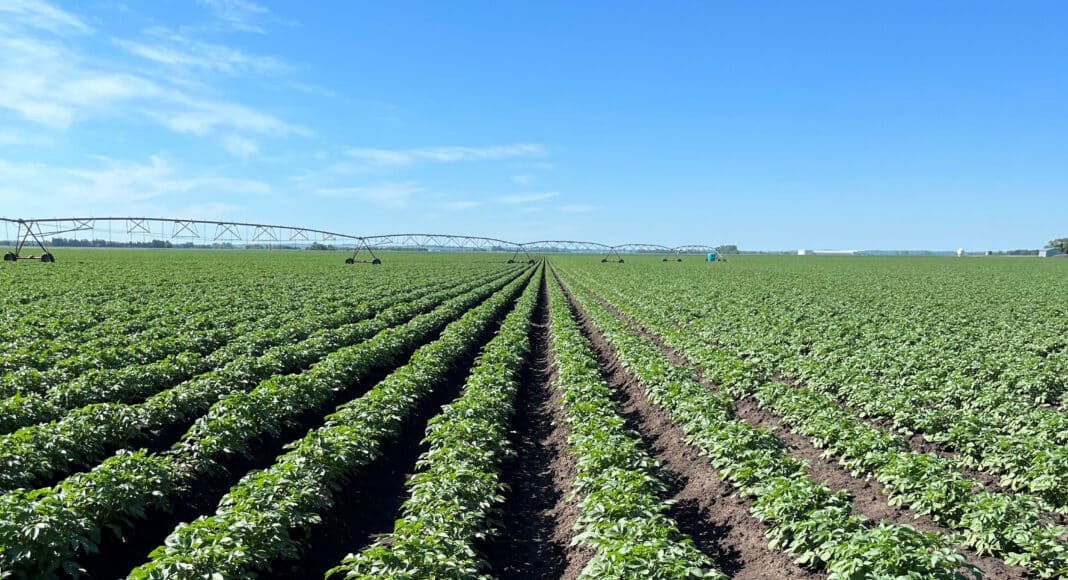Every grower knows that a high yielding, high quality potato crop requires good nitrogen management. Too much of a good thing really can be a problem, however. Excessive nitrogen is not only a waste of money and problematic for leaching, it can decrease tuber set, delay tuber maturation, reduce the quality of the crop, and reduce storability. Managing nitrogen efficiently and applying at the right time is critical to maximizing crop production on several fronts including optimizing specific gravity (in the ‘sweet spot’ of 1.088 to 1.094 harvest) and improving fry colour, leading to better contract payouts.
Whereas many growers are used to applying in-season nitrogen as early as the beginning of July, last year was a great example of the importance of applying based on crop stage rather than calendar date. Applying too early, especially too early and a high amount, any time before the tubers are nickel and dime sized can blow the tuber set.
On the other end of the management window, applying nitrogen too late pushes the crop to focus on vegetative growth when it should be focusing solely on tuber development. When fall runs long, a late nitrogen application MAY pay off with more yield. More often, however, late application simply means immature tubers at harvest.
To determine just how late is too late, work backward from the intended harvest date. If you expect to harvest between Sept. 9 and 15 , applying nitrogen after Aug. 1 is a recipe for poor fry colour, low gravity, weak skin set, and poor storability. Nitrogen after Aug.1 should be considered risky regardless of intended harvest date, as even the best-laid harvest plans often need to change.
The first step to optimizing nitrogen is knowing what you already have in the plant and soil. Consider soil and petiole testing to help take inventory. Testing frequently is recommended, but even just once can give a basic overview of nitrogen availability. While petiole sufficiency recommendations are usually based on days-after-emergence, the more important consideration for petiole content and supplemental N applications should be crop stage and days to harvest.
Processors reward high value potatoes. If you push for an extra 20 or 30 cwt/acre but lose four or five per cent of your harvest to rot in storage, you’ve wasted your nitrogen investment, caused yourself all kinds of storage headaches, and gained nothing in productivity. What matters isn’t what you pull out of the field and put into storage; it’s what you successfully deliver to the processor. If you want the best possible returns, review your contract incentives and get a feel for where you can optimize your opportunity and still be able to store a quality, reliable crop. Sugar sampling can provide an agronomy report card that clarifies whether you have applied too much or just the right amount of nitrogen.
Related Articles
Don’t Let CO2 Discolour your Profits Away
The Case for Sugar Sampling Your – Yes, Your – Processing Potatoes
Better Managed Moisture is Step One for Improving Efficiency











